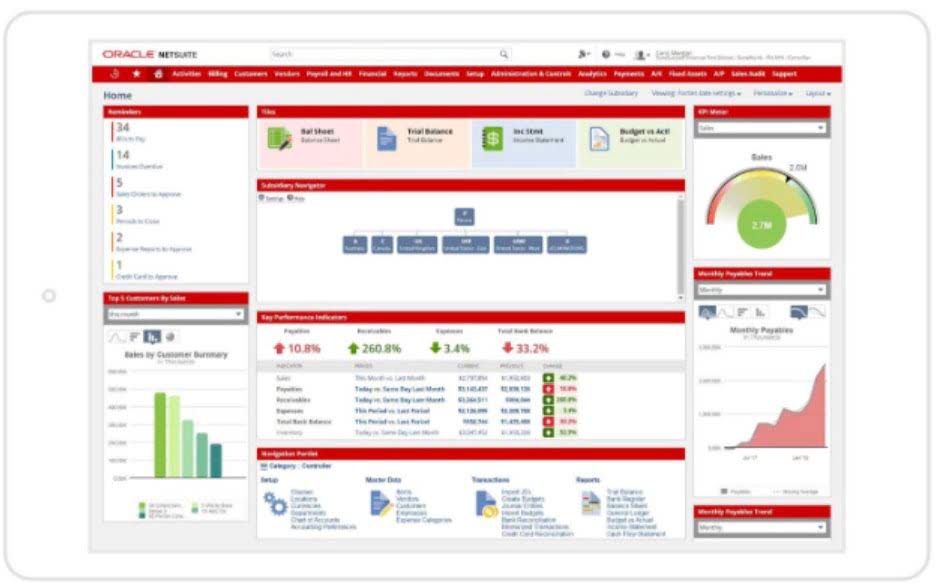The W.M. Keck Biological Imaging Facility provides scientists with the equipment, training and support necessary to generate and interpret microscopic images. The KI Zebrafish Core Facility was established to provide expertise to KI and MIT researchers who wish to utilize zebrafish as a model organism for any kind of research along with professional daily care of the animals and aquarium systems. The facility can meet a wide range of needs, from one-off experiments of limited scope, to long-term maintenance of dozens of transgenic and/or mutant lines. Our clinical services, research support, and preclinical platforms position researchers to successfully set up and execute safe and successful human subject research.
Lincoln Laboratory technologies win seven R&D 100 Awards for 2025
Our mass spectrometry facility has both low-resolution and high-resolution MS systems with electrospray, MALDI, EI, CI and DART ionization modes. HealthLab features an extensive array of equipment and spaces to accommodate all types of human subject research, with a focus on research related to accelerated medical innovation and health and wellness applications. In this and many other ways, it presents an extraordinary opening to create positive change for our entire research enterprise – and I encourage any interested faculty member to apply. Danna Freedman, the Frederick George Keyes Professor of Chemistry, has been appointed faculty director of the Quantum@MIT Initiative, which we will formally launch during the upcoming academic year.
Human Resources (HR)

MIT Health is an accredited ambulatory care center serving the health and wellness needs of the MIT community. We conduct more than 100,000 visits annually and are proud to continue a tradition of caring for the Institute community that spans more than a century. Our clinical offerings encompass multiple specialties, including dental, eye, adult primary care, pediatric primary care, mental health, obstetrics and gynecology, and sports medicine. establishing and managing a service center mit office of the vice president for research We provide occupational and employee health services, community wellness programs, and seven-day-a-week urgent care. We sponsor the MIT Student Health Insurance Plan (MIT SHIP) in partnership with Blue Cross Blue Shield of Massachusetts.
The Parking & Transportation team develops and manages commuter service programs for MIT’s 27,000+ faculty, students, and staff, and operates the shuttle programs across campus. To fill this key position – so important to the health of MIT’s research enterprise – Provost Cynthia Barnhart and I appointed a search committee of faculty from across the Institute. After conferring with members of the community, the committee advised us that the role, which we had planned to shift to a senior vice provost title reporting to the provost, should remain as a vice president reporting to me. Positioned within the Office of the Vice President for Research, the Chief Research Compliance Officer coordinates the development and implementation of export control and research compliance programs across MIT.
Core Facilities and Service Centers
He oversaw the launch of programs including the Institute for Data, Systems, and Society (IDSS), the Institute for Medical Engineering and Science (IMES), the Sandbox Innovation Fund, and the MIT Beaver Works program with Lincoln Laboratory. He also strengthened co-curricular and enrichment programs for undergraduate and graduate students, and worked with department heads to offer more flexible degrees. The Systems team develops, implements, configures, and maintains MIT’s electronic research administration and compliance systems.
The instruments in the facility form part of the Center for Geochemical Analysis (CGA), which comprises six instrument-oriented facilities. The microprobe facility serves a broad spectrum of research scientists at MIT, Woods Hole Oceanographic Institution (WHOI), neighboring universities, academic institutions and the industry. The Space Propulsion Laboratory (SPL) features state-of-the-art experimental facilities that complement our educational and research programs.
Beyond his own research, which aims to dramatically cut the climate impacts of aviation, he personally presented 250 faculty promotion cases as dean and heard well over 1000 others across the schools as a member of Academic Council, giving him an unusual grasp of the broad universe of MIT research. I write to share the news that Vice Chancellor Ian A. Waitz, the Jerome C. Hunsaker Professor of Aeronautics and Astronautics, has agreed to become MIT’s next vice president for research (VPR). MIT’s indirect cost rates have been updated as a result of our routine, yearly negotiations with the federal government. The letter announces a new streamlined system, MyCOI-OPA+, for consolidated reporting of financial conflicts of interest and outside professional activities, as well as a Conflict of Commitment policy that applies to all Institute employees. The letter announces that the Cryogenic Laboratory (CryoLab) will close on October 1, and continuity of service for researchers who relied on the lab will be provided by the Institute’s preferred supplier for packaged gas services, Linde Gas and Equipment.
During Canizares’ tenure, the Office of the Vice President for Research assumed primary responsibility for the Office of Sponsored Programs. Images for download on the MIT News office website are made available to non-commercial entities, press and the general public under a Creative Commons Attribution Non-Commercial No Derivatives license. A credit line must be used when reproducing images; if one is not provided below, credit the images to “MIT.” MITOS’s mission is to transform MIT into a powerful model—that generates just, equitable, and scalable solutions for responding to the unprecedented challenges of a changing planet. To achieve our mission, the office seeks to advance a collaborative process that engages and elevates a diverse set of voices to foster operational excellence, education, research and innovation on our campus. MIT faculty, staff, students, and affiliates can receive guidance and complete activities by phone, via email, and in person at the Center, located in E17.
- We focus on maintaining a safe academic environment, providing efficient and rapid emergency services, and educating community members on crime prevention and personal safety.
- To support researchers working beyond disciplinary and organizational boundaries, MIT has created a network of laboratories, centers, institutes, initiatives, programs, and collaborations.
- Waitz will step down from his current role as vice chancellor overseeing undergraduate and graduate education, where he was instrumental in advancing the priorities of the Chancellor’s Office, currently led by Melissa Nobles.
Information Systems and Technology (IS&T)
Our clinical services promote the translation of basic science and engineering advances into patient-oriented research, and ultimately into clinical practice. The Office of the Vice President for Research has overall responsibility for research administration and policies related to research at the Institute. The Institute is committed to responsible and ethical conduct of research and stewardship of sponsored funds. Our commitment is reflected in many of our policies and procedures, which serve the dual purpose of expressing MIT’s core values and promoting our compliance with applicable laws and regulations. Canizares is an authority on high-resolution X-ray spectroscopy and plasma diagnostics of cosmic sources including supernova remnants, X-ray binaries, active galactic nuclei, and quasars. He led the development of the Chandra High-Resolution Transmission Grating Spectrometer on NASA’s Chandra X-ray Observatory.
- Open Space Programming works closely with collaborators to create welcoming, inclusive programs designed to engage the MIT, Cambridge, and Kendall Square communities.
- A key aspect of that support is ensuring a strong infrastructure to support the research enterprise.
- In this and many other ways, it presents an extraordinary opening to create positive change for our entire research enterprise – and I encourage any interested faculty member to apply.
- Waitz, who is also the Jerome C. Hunsaker Professor of Aeronautics and Astronautics, brings deep knowledge of MIT to the position.
Other Laboratories, Centers, Institutes, and Initiatives
His research focuses on developing technological, operational, and policy options to mitigate the environmental impacts of aviation. He is a member of the National Academy of Engineering, a fellow of the American Institute of Aeronautics and Astronautics, and has worked closely with industry and government throughout his career. The Audit Division evaluates MIT’s academic, research, and administrative processes and supports the Institute’s efforts to follow good practices, take informed risks, and keep assets safe. We work for the MIT Corporation Risk and Audit Committee and with managers on campus and at Lincoln Laboratory to provide insight, offer recommendations for process improvements, and inform decision-making. CLARITY technology equipment includes a high-content rapid throughput imaging microscope system from Leica Microsystems and Leica supporting software.
MIT students, staff, faculty and approved visitors are eligible to work at SPL, provided that safety training requirements are met and users are familiarized with the laboratory environment. At MIT, a Service Center (also known as a service facility or recharge operation) is essentially a “small business” operated by an academic department, interdepartmental laboratory or center (DLC) to facilitate departmental/institutional research. By closed-loop, we mean that all expenses to be recovered through the Service Center’s rates and all revenues collected by the Service Center are recorded in that Center’s cost collector and no funds are transferred out of that cost collector. In addition, no costs for unallowable items or activities unrelated to the operation of that Center are charged to the cost collector because these charges form the basis for rates charged to customers, including the Federal government. Service Centers are self-adjusting in that accumulated deficits/surpluses are incorporated into future rates such that each center maintains a break-even position over a reasonable period of time. They develop and disseminate reports for the Office of the Vice President for Research, the Institute, and federal government reporting requirements.
Research Integrity Resources
DMSE’s shared laboratory facilities include spaces and equipment for teaching, research, experimentation, and manufacturing and are available to the MIT Community. The Structural Biology Core Facility is open to the entire MIT community in structural biology and provides access to state-of-the-art equipment for X-ray crystallography. I extend my deep appreciation to Dan for taking on this responsibility; in a long career defined by energetic dedication to our community, this stands as just the latest example of his selfless willingness to step up in service to MIT. Since earning his PhD from Caltech, Ian has spent his career here, rising to lead both his own department – AeroAstro – and eventually the School of Engineering, a role in which he launched thriving programs from Sandbox to Beaverworks.


![]()






